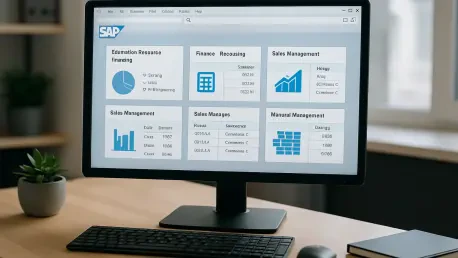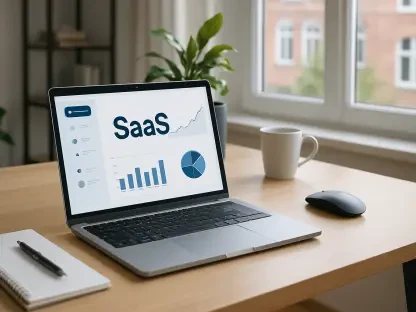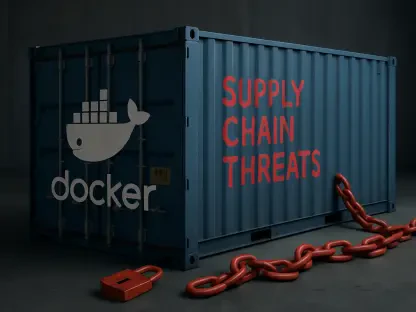In a rapidly evolving retail landscape, where technology often dictates competitive advantage, the decision by Kingfisher, a prominent European retailer managing around 2,000 stores including well-known UK brands like Screwfix and B&Q, to diverge from a traditional software upgrade path has sparked significant interest among industry observers. This strategic move away from SAP’s recommended transition to S/4HANA through the RISE with SAP program highlights a growing tension between large software vendors and their clients. The crux of this debate centers on the balance between the high costs of vendor-driven upgrades and the pursuit of innovation through more affordable, flexible solutions. Kingfisher’s approach not only challenges conventional ERP upgrade models but also raises questions about how enterprises can achieve technological advancement without being tethered to rigid vendor roadmaps. This scenario sets the stage for a deeper exploration into alternative strategies that prioritize value over cost.
Navigating the ERP Upgrade Dilemma
The Push for Cloud-Based Solutions
SAP has been actively encouraging its customers to move from the legacy ECC 6.0 platform to the newer S/4HANA system, emphasizing the benefits of cloud adoption and a subscription-based licensing model. This shift, promoted through the RISE with SAP initiative, promises access to cutting-edge innovations like AI capabilities, which are exclusively available in public or private cloud environments. However, this transition comes with challenges, including the inability to transfer customizations, the need for a “clean core” system, and significant financial implications. With mainstream support for ECC 6.0 ending in just over two years and extended support available at a premium until 2030, the urgency for companies to decide their next steps is palpable. SAP’s leadership has attempted to reassure clients that no one will be left behind, yet the complexities and costs of migration continue to fuel apprehension among many organizations reliant on these systems for their operations.
Customer Concerns and Vendor Dynamics
The concerns surrounding SAP’s upgrade strategy extend beyond technical hurdles to encompass broader issues of value and trust. Many enterprises grapple with the steep price increases associated with maintenance and licensing, often questioning whether the benefits justify the investment. The requirement to abandon customizations that have been tailored over years to meet specific business needs adds another layer of frustration. Furthermore, the experience of software audits, often perceived as intrusive, has strained relationships between vendors and clients. Despite these challenges, there remains an acknowledgment of the quality of SAP’s products and the potential for collaboration. This duality reflects a nuanced dynamic where companies seek to maintain positive ties with vendors while pushing back against models that seem to prioritize vendor revenue over customer value, highlighting a critical tension in the ERP ecosystem.
Kingfisher’s Alternative Path to Innovation
Leveraging Third-Party Support for Cost Savings
Kingfisher’s decision to reject SAP’s prescribed upgrade path in favor of retaining its ECC instance on the Google Cloud Platform represents a bold stance against conventional vendor strategies. By partnering with Rimini Street for third-party support, the retailer has managed to address its extensive customizations while reportedly slashing support costs by 50 to 90 percent compared to SAP’s offerings. This financial relief has been instrumental in reallocating resources toward innovation rather than vendor fees. Chris Blatchford, Kingfisher’s Group CTO, has openly criticized the lack of justifiable value in SAP’s maintenance costs and the burdensome nature of audits, while still expressing appreciation for the vendor’s products. This approach underscores a pragmatic balance—engaging with major vendors only when tangible benefits are evident, rather than succumbing to imposed pricing structures or licensing models that do not align with business priorities.
Building a Flexible Architecture for Future Growth
Beyond cost savings, Kingfisher has demonstrated that innovation does not necessitate adherence to a vendor’s latest platform. By migrating core ERP data to the Google Cloud Platform and integrating advanced tools like extract-transform-load processes, analytics, and machine learning solutions from Databricks and Google, the retailer has crafted a modular, API-first, and event-driven architecture. This setup has enabled the development of sophisticated features such as AI-driven personalization, recommendation engines, and conversational bots that boost e-commerce conversions, alongside adaptable pricing models. Although managing microservices introduces complexity, this architectural flexibility has freed up budget for further investment in emerging technologies. Kingfisher’s success in achieving these advancements outside SAP’s framework challenges the notion that cutting-edge innovation is tied exclusively to cloud migration or vendor-mandated upgrades, offering a compelling alternative for other enterprises.
Reflecting on a Shift in ERP Strategies
Redefining Vendor-Client Relationships
Looking back, Kingfisher’s journey revealed a pivotal shift in how enterprises interact with software giants like SAP. The retailer’s choice to prioritize value through third-party support and a customized cloud strategy marked a departure from traditional ERP upgrade paths. This decision not only addressed immediate financial pressures but also redefined expectations for vendor-client engagements. By focusing on cost-effectiveness without sacrificing innovation, Kingfisher challenged the industry to reconsider the assumption that the latest platforms are the sole gateway to technological progress. The emphasis on strategic partnerships and architectural adaptability highlighted a growing demand for solutions tailored to specific business needs rather than one-size-fits-all models, setting a precedent for how companies can navigate vendor dynamics with a focus on mutual benefit.
Charting the Future of Enterprise Software
As the dust settled on Kingfisher’s bold move, the broader implications for the ERP landscape became clearer. Enterprises facing similar pressures could look to this case as a blueprint for balancing cost and innovation. Exploring third-party support options, investing in modular architectures, and critically evaluating vendor proposals for tangible value emerged as actionable steps for those hesitant to commit to costly upgrades. The success of alternative strategies suggested that flexibility and independence in tech decisions could yield results comparable to, or even surpassing, vendor-driven roadmaps. Moving forward, fostering open dialogue between vendors and clients about pricing transparency and customization needs could pave the way for more collaborative relationships, ensuring that the future of enterprise software prioritizes customer-centric innovation over rigid frameworks.









